May 14, 2025
How To Cut Your Amazon FBA Fees and Increase Profit!
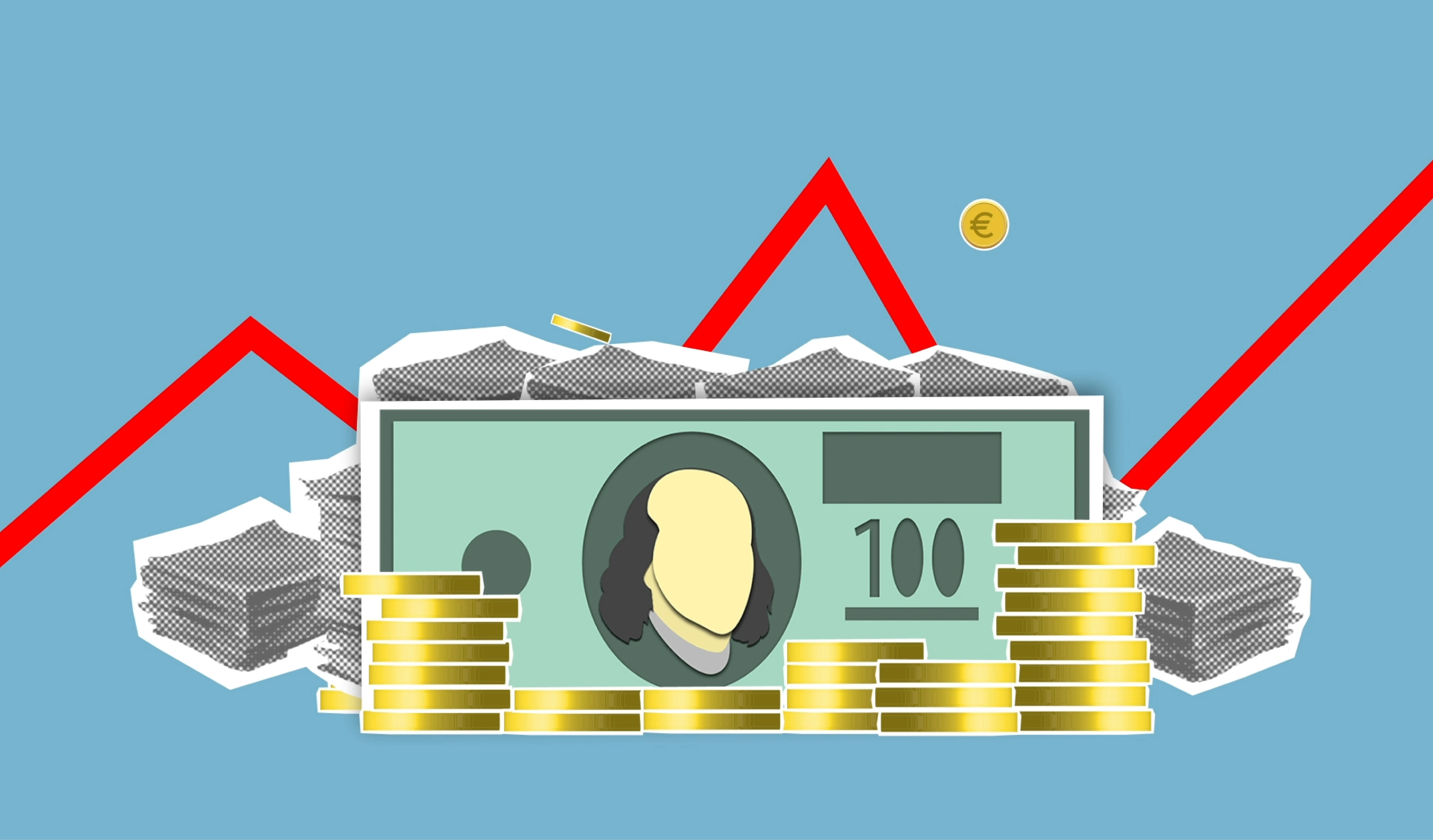
Optimizing your product packaging is one of the easiest ways to cut costs and increase your margin on Amazon, and it’s shocking how few sellers focus on this!
Especially when the product is on the cusp of FBA product size tiers, as it can make a big difference to the FBA fee Amazon charges you to fulfill orders. Not only that, but it will also affect your storage fee per unit for inventory held at Amazon’s fulfillment centers.
And with Amazon increasing fulfillment fees over 30% in the past 2 years, now is not the time to be leaving any money on the table.
So in today’s post, we will cover how Amazon calculates fees and how to reduce Amazon FBA fees.
- Amazon Product Size Tiers
- Amazon Fee Breakdown
- Shopkeeper - the Best Amazon Profit Tracker
- Amazon FBA Small and Light
Amazon Product Size Tiers
Amazon product size tiers are measurement categories based on the weight, dimensions, and dimensional weight of your packaged product, ranging from Small Standard-Size to Special Oversize:
| Product Size Tier |
Unit Weight |
Longest Side |
Median Side |
Shortest Side |
Length + Girth |
|---|---|---|---|---|---|
| Small standard-size |
16 oz |
15 inches |
12 inches |
0.75 inch |
n/a |
| Large standard-size |
20 lb |
18 inches |
14 inches |
8 inches |
n/a |
| Small oversize |
70 lb |
60 inches |
30 inches |
n/a |
130 inches |
| Medium oversize |
150 lb |
108 inches |
n/a |
n/a |
130 inches |
| Large oversize |
150 lb |
108 inches |
n/a |
n/a |
165 inches |
| Special oversize |
Over 150 lb |
Over 108 inches |
n/a |
n/a |
Over 165 inches |
But further than that, FBA fees can still differ within each product tier. So, a 5lb small standard size product will cost more to fulfill than a 1lb small standard size product.
And while there’s not too much you can do about the weight of your product; the packaged dimensions can often be made a bit smaller simply by using customised boxes and this can make a meaningful difference to your bottom line.
Amazon Fee Breakdown
Let’s take a look at an example so you can see how this works, using Amazon’s Revenue Calculator.
So our fictional product sells for $40, has packaged dimensions of 4 x 5.5 x 20 inches, a weight of 1.5 lbs, and is in the Baby Products category.

This gives us the following fees:
Amazon referral fee - $6.99
FBA fee - $10.58
Storage fee - $0.13
Total fees - $17.70
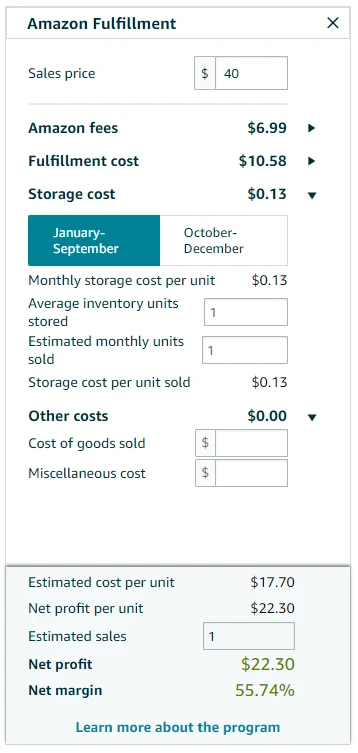
But what happens if we optimise the product packaging and get a very slight reduction in the overall length, taking it down from 20 inches to 18 (with everything else the same)?
Let’s see if this makes any difference to our Amazon fulfillment fee.

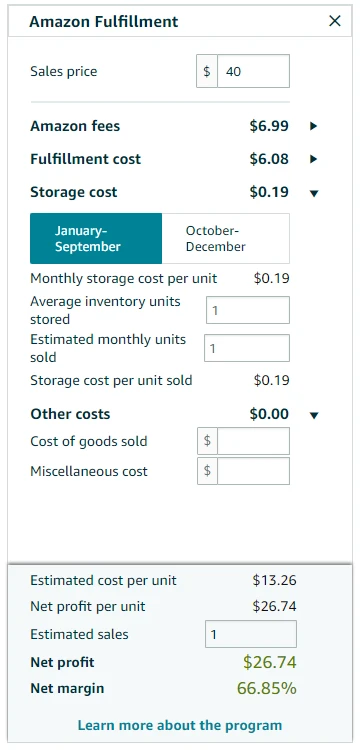
And there you go! The FBA fee has dropped from $10.58 to $6.08, meaning the total fees are now $13.26 instead of $17.70, giving you an extra $4.44 of net profit per sale!
For anyone who thinks this is insignificant, that extra 11+% of net margin can make or break your Amazon business and can mean a difference of tens of thousands of dollars per month, all from making a small adjustment to your product packaging.
And in fact, your savings can be even higher as the reduced dimensions will result in lower freight costs, lower shipping to Amazon costs, less storage space needed, etc!
This really is a no-brainer.
Shopkeeper - the Best Amazon Profit Tracker
As Amazon gets increasingly competitive, it’s becoming more and more important to optimize every aspect of your Amazon business, and understanding all your fees and costs is paramount to this.
That’s where Shopkeeper, the #1 Amazon seller software, comes into play as we take all the guesswork away, telling you exactly how much profit you’re making per sale, to the cent, with all the fees and cost broken down for you so you can get as much information as you want.
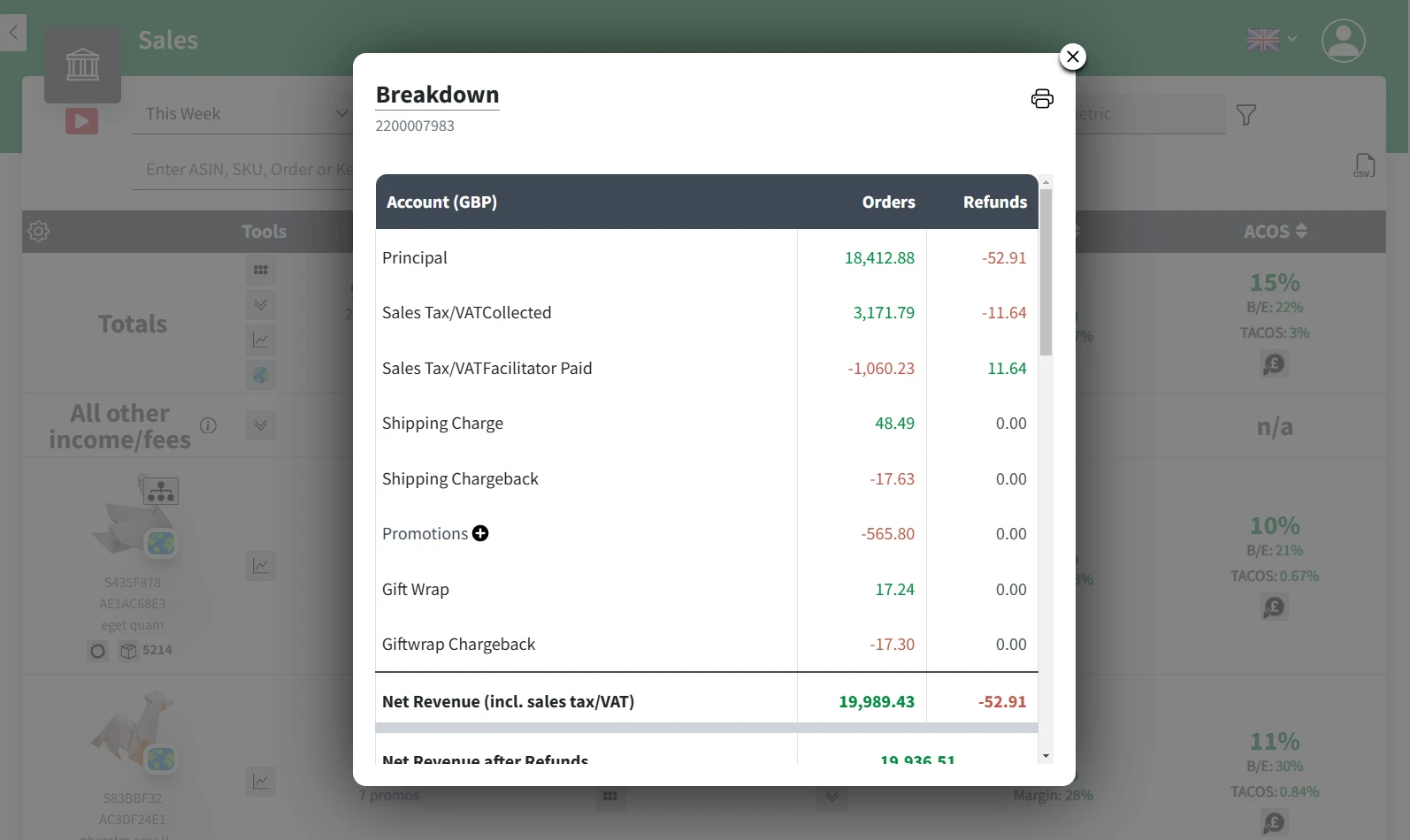
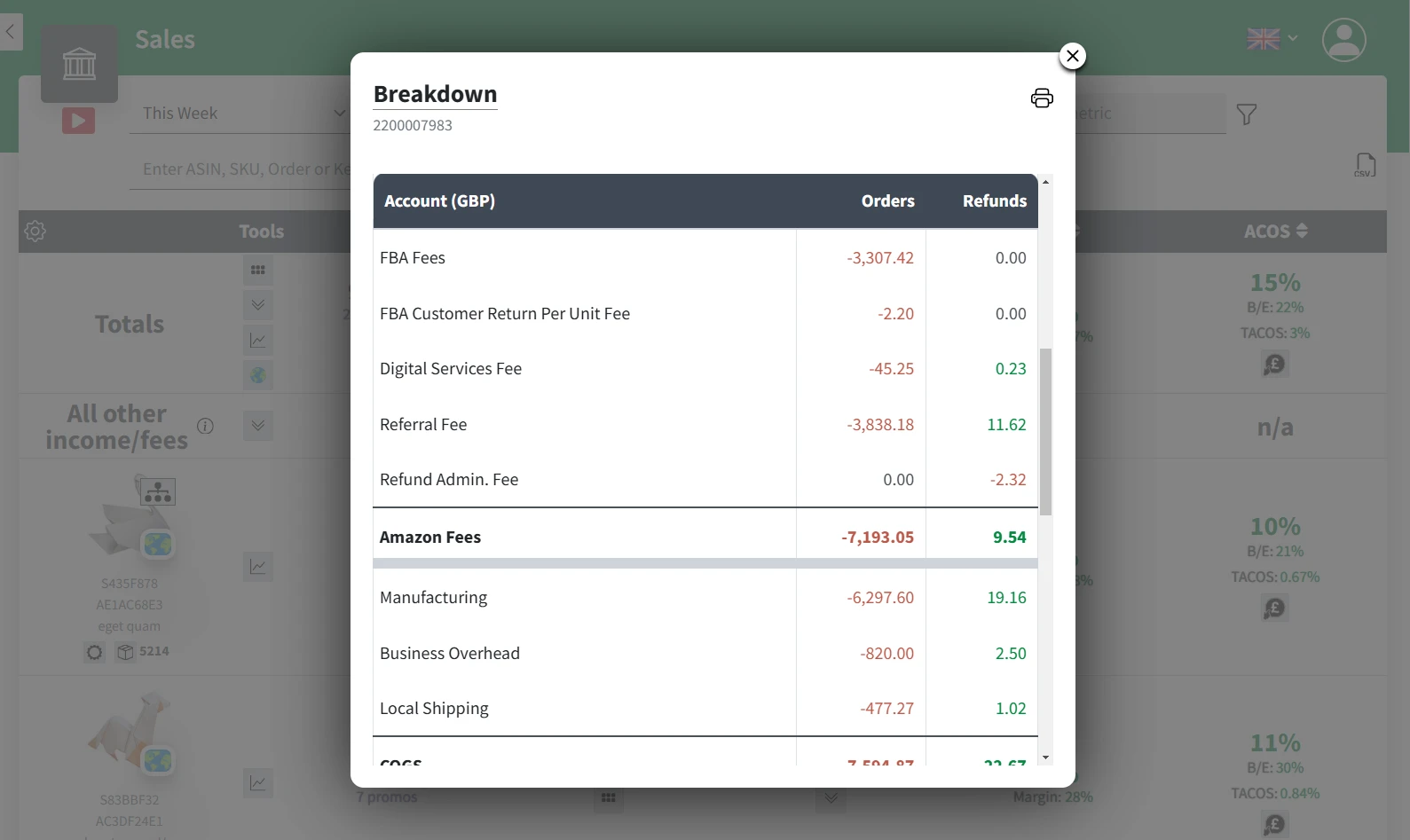
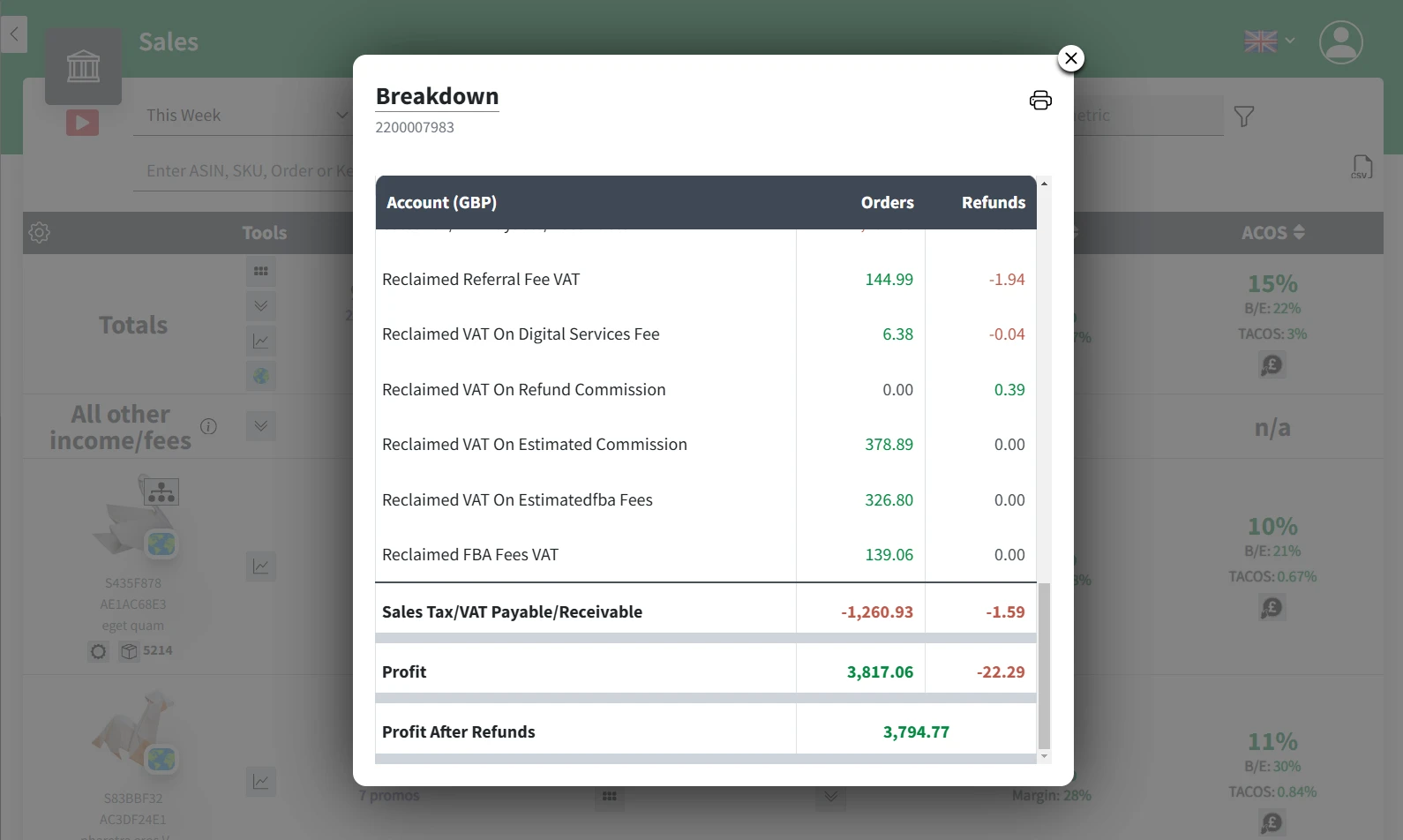
Shopkeeper really does take all the guesswork away and allows you to focus on the big decisions that will make a real difference to your business.
Going back to optimising product packaging, and there’s a specific Amazon programme that can make this even more lucrative (if your product is eligible!):
Amazon FBA Small and Light
Small and Light is a program run by Amazon that offers reduced fulfillment fees for certain products, which, as the name suggests, have to be small and light (and also cheap).
Here are the full eligibility requirements for the Amazon FBA small and light program in the US: 1. The product must measure 18 x 14 x 8 inches or less
-
The product must weigh 3 lbs or less
-
The product must be priced at $10 or less
Simple!
For most private label sellers the maximum price requirement will be the issue, but if you do sell lower value items and qualify, then you can make huge savings on your FBA fulfilment fees.
Here are the current Small and Light fees:
| Size Tier |
Shipping Weight |
FBA Fee |
| Small Standard |
6 oz or less |
$2.47 |
| 6-12 oz |
$2.61 |
|
| 12-16 oz |
$3.15 |
|
| Large Standard |
6 oz or less |
$2.66 |
| 6-12 oz |
$2.94 |
|
| 12-16 oz |
$3.77 |
|
| 1-2 lbs |
$4.42 |
|
| 2-3 lbs |
$5.19 |
Enrolling in Small and Light is incredibly easy, just head over to this page in Seller Central and you can check eligibility and enrol your listings there.
And as always, Shopkeeper has you covered when it comes to giving you the most accurate info.
Unlike some other software that initially estimates all orders using standard FBA fees, Shopkeeper will automatically recognize any listings that are enrolled in Small and Light after the first sale and give you the correct fees straight away and this will be specified, so you know exactly why.
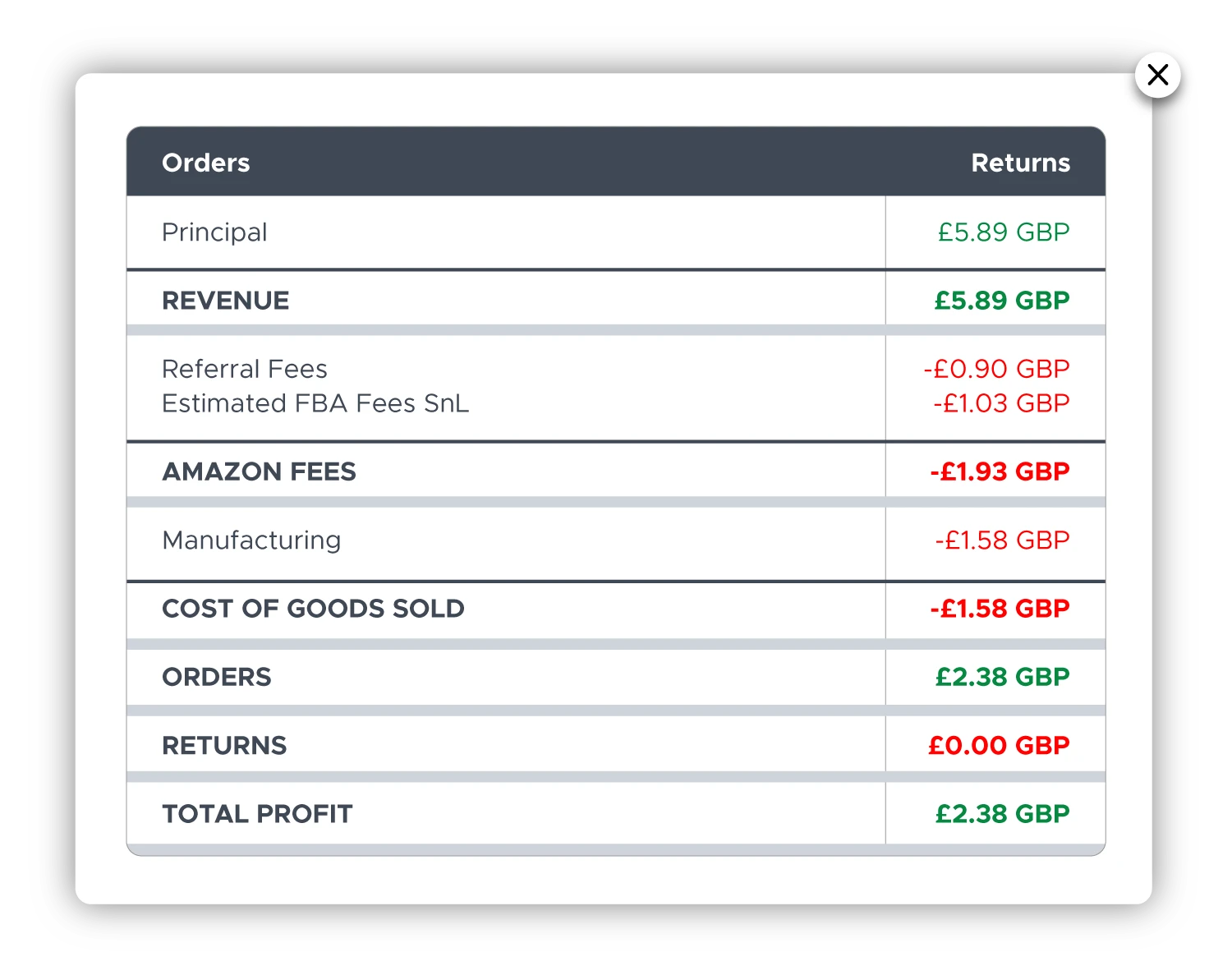
Conclusion
Now that you learned how to reduce Amazon FBA fees, there’s really no reason at all for you not to look into our product packaging and see if and how it can be optimized for Amazon.
It won’t always be possible, but there are no downsides to trying.
And you can even take it further and think about the size and weight of your product itself when you’re creating it.
Even if after looking at everything you can’t lower your costs at all, it’s still time well spent as you NEED to know exactly what you’re paying in fees when it comes to selling on Amazon.
We’ve seen enough sellers burnt from not properly forecasting their FBA fees or something changing and they don’t realise until it’s too late.
So don’t make that mistake. Use Amazon’s revenue calculator to estimate fees when researching and then use Shopkeeper to keep on top of everything afterward.



